Stories online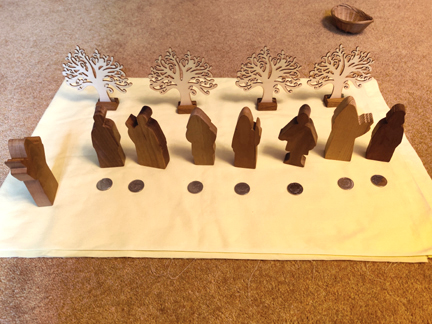
However many stories online do not do this. Their starting point is a moral "God wants us to be nice to other people" or a theological concept "Jesus died for our sins" which they want to get across to the children and the story is then twisted to fit. Others attempt to keep children engaged by adding "extras" to the story - humerous characters, continuously joky script or gimmicks that have little to do with the narrative. An alternative is to write your own - and this is what many of us have been doing! The following stories are not perfect but you are welcome to share them or use them as a starting point for developing your own scripts. They are arranged by theme: Old TestamentI find this is one of the biggest differences. At Footsteps events the children and their families come into an enclosed space that I have set up. There are designated areas for story, craft and activities, reflection and prayer. While they have the opportunity to move freely around the space and experiment, essentially I remain in control of this space and what happens here. Zoom isn't like this. 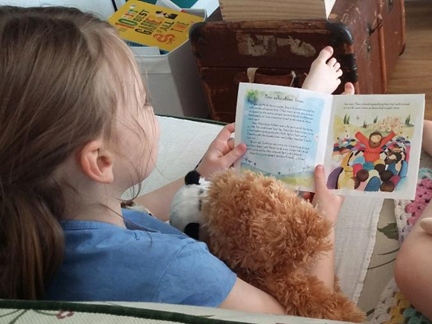 The screen is only a small part of the space the children occupy physically. I have no control over where they are in the space which opens out behind them - room, house, garden... Children (especially the younger ones) often disappear. I have no idea if they are still watching, fetching a snack or doing something else entirely. It was disconcerting at first, but I've come to accept that their space is outside my control. I have no sense of a shared sacred space or how to work towards it. People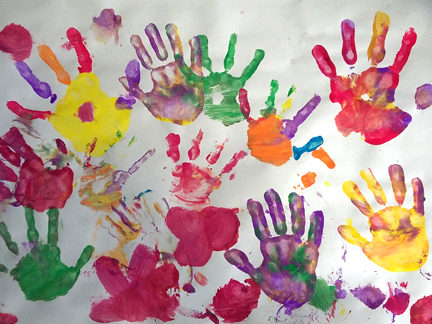 I found it difficult to juggle so many screens at the first zoom session and so decided to split the group into two - a mostly younger group (8 year olds and under) and a mostly older group (8 year olds and over). This has worked much better. I find I'm more aware of each child and try to make sure everyone is included. Some families sit close to the screen while others sit far away; reading body language or even facial expressions is difficult if not impossible. Even with those who are sitting closer, they are watching the screen; it isn't the same as eye contact and I need to be extra careful of expression and what I say in order to affirm them.. So far I have offered invitations only to those who have been to Footsteps events in the past. Not everyone has come though most of our regular families have been at least once. I use the waiting room to stop any hijacking of the meeting. Zoom hasn't been a way to reach out to new people and it's hard to see how that would work. Gathering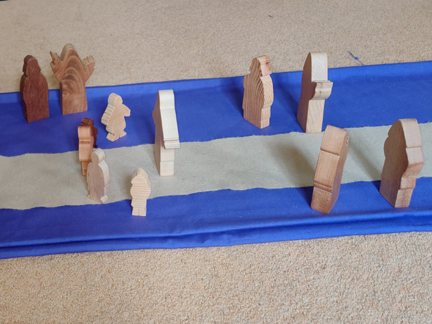 "That's a fantastic... oh here's Josie. Hi Josie! You need to press the button for video. Down at the bottom... Sorry Emily, that's a fantastic model of a ... No we still can't see you Josie and family...the button at the bottom... Sorry Emily is it a... oh here's Tom... Hi Tom..." After finding every zoom session began something like this, I now do it differently. I ask everyone in turn if they want to share something they have done since we last met. I try to stay focused on them, with only a brief Hi to the new arrivals. As each new person joins I give a brief resume of what has been shared so far. (Luckily the groups are small enough to be able to do this!) Some weeks everyone has been incredibly inventive - zip wires for teddies down the stairs, amazing models of islands and fire engines. Other weeks everyone seems to be flopping around exhausted and looking blank when I ask about their week. Every week someone arrives late - technical problems, inconvenient phone calls, demands of daily life... But then people arrived at different times for Footsteps events too... Story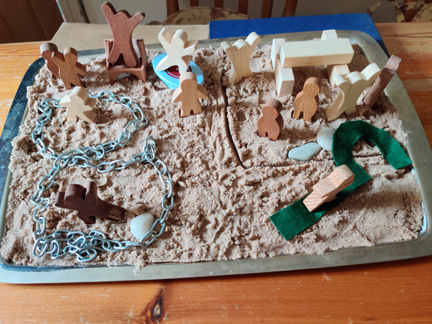 I tell the story on the table. I use a mixture of Godly Play, Deep Talk stories and my own material told in the style of Godly Play with little people and symbols. I've used a sand tray twice, with a wooden implement rather than my hands to shape the sand (I hate to think what sand would do to my computer!) So far I've told a series of parables and Pentecost, usually filming the story afterwards for any others who want to take part. I'm planning to tell a series of children in the Bible stories to the younger group and stories of exile for the older group. I keep glancing at the screen to check that the story is still in view. Sometimes I take a quick look at the children; they do seem to be watching... Wondering and response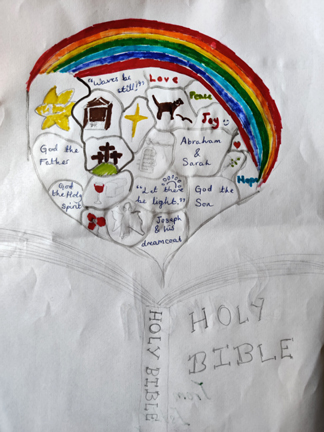 This has been a surprise! At Footsteps events the younger children rarely said much (if anything) when I asked the wondering questions at the end of the story. Now, when I ask, "I wonder what you liked best about the story?" even the quietest ones respond, whispering to their parents/carers who type their responses into the chat box. Some of the 6 - 8 year olds like to type in their own responses, which can take quite a time! I've been amazed at how thoughtful they are, given the chance. Once I suggested they find something in their house to help tell the story better. At the next session, one of the six year olds (unprompted) produced a table and some sylvanian animals. "The table is to represent the celebration," she said, "and these are the people." Since then I always ask this question and their responses have been surprisingly imaginative. One family produced an umbrella to go up and down to create the wind for Pentecost, while others found things to wave and all sorts of red and yellow items to represent the flames. 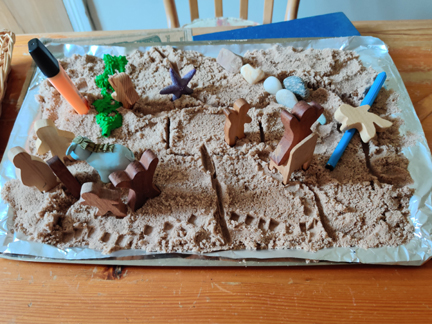 By contrast the older group have been more reluctant to commit themselves. A couple of times I have used the sand and added symbols and places to represent what they are saying. I've put together a basket of possible symbols - however their suggestions have always included things I haven't thought of, necessitating a dash around the house for something appropriate. I've also used the wooden figures and asked where they would place themselves in the story. Prayer and Reflection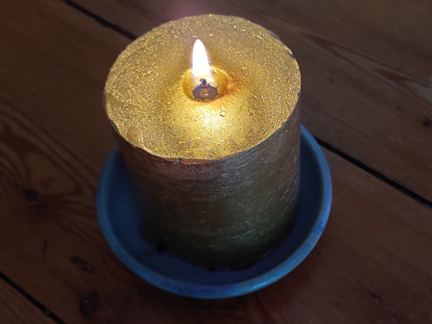 Towards the end of each session, I light a candle and we have a few moments of quiet. Occasionally some of them have written a prayer into the chat box which I then read out. I say a finishing prayer and we sign "Amen". Last week, after the story of Naaman, the little servant girl and the prophet Elisha, the younger group learnt to sign "Peace" as well. Activities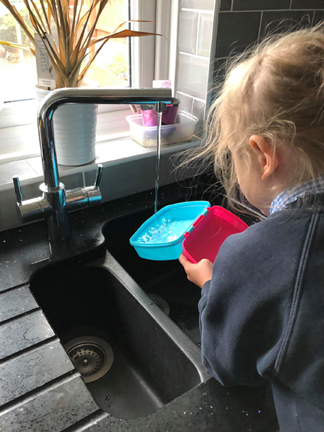 Footsteps sessions always include a variety of craft and other activities (for example model magic, scratch art, junk modelling). The children and adults move freely between these activities, often creating alongside each other or working together. The crafts are open ended and a free response is always possible. All I can offer now is a series of suggestions for response. I try to vary it and include activities as well as craft for example growing seeds (or cleaning something!) The craft ideas are fairly basic as families only have limited resources at home. Sometimes the parents send photos of their creations or of the children engaging in the activity which I share with the group (with permission). Take up varies, but that is fine - I think families have been inundated with ideas of things to do during lockdown, as well as all the expectations of home schooling. How well does it work?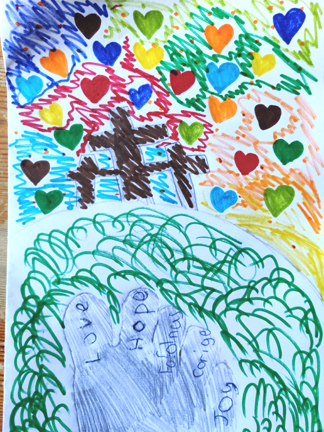 I've often finished a session wondering if anyone got anything from it! Some sessions seem extremely bitty or have technical problems. Others lack flow and there seems to be little response from the children (or the adults!) I wondered this especially after telling the story of the workers in the vineyard to the older group – until one parent told me how two of her children had spent supper discussing whether the vineyard owner had acted fairly! Other parents tell me their children enjoy it or get a lot out of it and send photos of their response. It's also worth remembering that many children still only see their immediate family. Most 7 - 10 year olds won't be in school until September. This is hard if other siblings have returned, and also hard if everyone is still at home. The zoom sessions remind them that they still matter to trusted adults outside their family and to each other. We still care. As school connection is patchy and other activities on hold, this may be the only time they experience this. 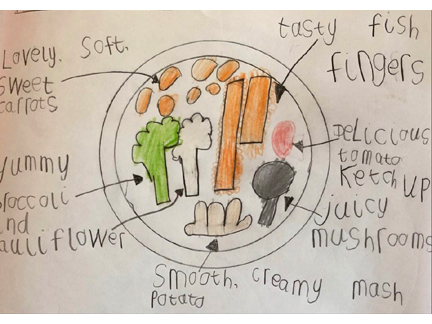 Like everyone I really miss just being with the kids. This isn't ideal and it isn't what I would choose. But this is where we are... What next?It will be interesting to see how this develops. It isn't the same as just transferring what I used to do in real life to the screen. I'm currently wondering about how to develop the prayer time and perhaps suggestions for creating a focus area at home...SarahJune 2020 |